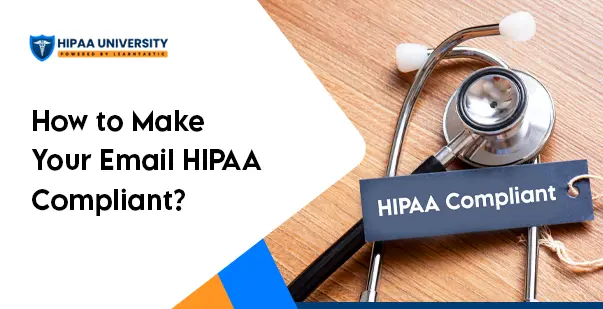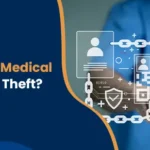How to Make Your Email HIPAA Compliant

August 7, 2024
In today’s digital world, email is our main way to talk to each other—and that’s true in healthcare too. It makes it easier to connect with patients, insurance companies, and other medical professionals. In fact, a survey revealed that 93% of patients prefer to communicate with healthcare providers via email, citing convenience and the ability to refer back to written information as key benefits.
But when you’re dealing with private patient information, there are big risks that can outweigh the benefits of email. That’s why it’s so important to make sure your emails follow the rules of HIPAA.
The Health Insurance Portability and Accountability Act (HIPAA) is a set of rules that tells healthcare providers how to keep patient information private and secure. This means putting strong safety measures in place to protect personal data. So, for any healthcare organization, truly understanding and following HIPAA rules is a must.
Making sure your emails are HIPAA compliant involves a few key steps. These include setting limits on who can access emails, encrypting your emails (which scrambles them so only the right people can read them), and carefully checking your email service provider. Also, training your staff on HIPAA and how to use email securely is essential. By sticking to these guidelines, you can protect sensitive information while still using email effectively.
Understanding HIPAA’s Importance
HIPAA sets the standard for keeping private patient data safe. Any company that handles protected health information (PHI), which is any health information that can be linked to a person, must have the right physical security, network security, and procedures in place. This means you need to take these steps regularly. To protect protected health information (PHI), these same standards must also apply to your emails.
Why HIPAA-Compliant Emails Matter
When your emails follow HIPAA rules, it stops unauthorized people from getting to protected health information (PHI). If you don’t follow these rules, the consequences can be serious. This includes big fines and damage to your organization’s reputation. So, it’s crucial to understand and use HIPAA email encryption and security methods. Every healthcare organization needs to protect patient information by making sure their emails are always compliant.
How to Make Sure Your Emails Follow HIPAA Rules
Making sure your email system follows the Health Insurance Portability and Accountability Act (HIPAA) is really important. These steps help keep patient information safe and ensure you’re sticking to the necessary regulations.
Check Your Email Provider
First, confirm that your email provider supports HIPAA compliance. Big companies like Google and Microsoft, for example, offer services designed to meet HIPAA requirements. You’ll need to sign a Business Associate Agreement (BAA) with them. This is a contract that ensures they will also protect sensitive patient information.
Encrypt Your Emails
HIPAA requires you to encrypt emails that contain protected health information (PHI). Encryption scrambles the information, making it unreadable to anyone who isn’t supposed to see it. To make sure your emails meet HIPAA email encryption requirements, here’s what to do:
- Use strong encryption methods (like TLS for emails being sent over the internet).
- Ensure end-to-end encryption for complete security, meaning the email is protected from sender to receiver.
- Regularly update your encryption keys and keep a close eye on them.
Set Up Access Controls
Access controls stop unauthorized people from getting to protected health information (PHI). You need to make sure that only authorized staff members can view sensitive information. Implement these controls:
- Give every employee a unique user ID.
- Require strong, regularly updated passwords to prevent security breaches.
- Use two-factor authentication (2FA) for an extra layer of protection, which means users need two different ways to prove their identity.
Train Your Staff
Your team needs to be aware of Health Insurance Portability and Accountability Act (HIPAA) compliance requirements. Provide ongoing training to help them correctly safeguard sensitive health data. Focus on these key areas:
- Learning how to identify protected health information (PHI).
- Understanding the right ways to handle emails.
- Recognizing phishing attempts and suspicious emails.
Ensure Secure Email Transmission
It’s crucial to make sure emails are sent securely. Follow these practices:
- Use an email service that is specifically designed to comply withHIPAA regulations.
- Avoid using public Wi-Fi networks when sending protected health information (PHI).
- Always double-check the recipient’s email address before hitting send.
Monitor and Audit Email Activity
Regularly checking and reviewing email activity can help you spot potential security issues. Implement these measures:
- Keep a close watch on email activities to track changes and access.
- Perform routine evaluations to ensure ongoing compliance.
- Use intrusion detection systems (IDS) to identify any unauthorized access attempts.
Create an Email Retention Policy
Having a clear email retention policy helps you manage protected health information (PHI). This policy should ensure you securely store and properly dispose of emails when they’re no longer needed. Your policy should include:
- How long different types of emails should be kept.
- Solutions for securely storing emails.
- Proper methods for deleting old emails.
Best Practices for HIPAA-Compliant Secure Email
To keep your email system safe and fully compliant with the Health Insurance Portability and Accountability Act (HIPAA), it’s really important to follow certain best practices. These guidelines will help your emails work well while also protecting sensitive patient information. Follow these practices to maintain a HIPAA compliant secure email system:
Use HIPAA-Compliant Email Services
Choose email services that clearly state in writing that they conform to HIPAA rules.
Encrypt All Emails Containing PHI
Always use strong encryption for any emails that contain PHI. This applies to emails both when they are being sent and when they are stored.
Update Security Protocols
Stay informed about the newest security updates and make sure to implement them right away.
Educate Your Team
Ensure your entire team is well-informed about the best security practices and all the necessary HIPAA regulations.
Conduct Regular Security Audits
Perform security audits on a regular basis. These audits help you find and deal with any potential risks or weaknesses in your system.
Ready to put best practices into action?
Explore HIPAA training courses and start protecting your communications today.
Common Mistakes You Really Need to Avoid
So, you’re looking to make your email practices compliant with the Health Insurance Portability and Accountability Act (HIPAA)? That’s great! But here’s the thing: it’s super important to steer clear of some common pitfalls. If you can pinpoint and fix these usual errors, keeping your email communications secure and compliant will be a whole lot easier. When you’re working on setting up your HIPAA compliant email practices, make sure you don’t fall into these common traps:
- Not Encrypting Your Emails: Failing to encrypt emails containing sensitive data is a major breach of compliance.
- Weak Access Controls: If the measures you have in place to control who can access information aren’t strong enough, you’re practically inviting unauthorized access.
- Not Training Your Staff Enough: Let’s face it, untrained staff are way more likely to make mistakes that compromise security. A little education goes a long way here.
- Skipping Regular Audits: Thinking you can just skip those routine audits? Think again. Doing so allows vulnerabilities to go unnoticed, and that’s just asking for trouble.
- Using Public Wi-Fi: Sending protected health information (PHI) over public Wi-Fi is a recipe for unauthorized access. Avoid it at all costs!
Case Study: A Healthcare Provider’s Success with HIPAA-Compliant Email
Ever wonder what a successful HIPAA compliant email setup looks like in real life? Well, let’s dive into a case study right now. Here, a healthcare provider, by taking some smart, important precautions, managed to put a fully compliant email system into action. Their approach? It basically serves as a fantastic blueprint for achieving and maintaining those critical HIPAA regulations.
So, how did they do it? This healthcare provider used a really methodical approach to ensure their emails were HIPAA compliant. The very first step involved choosing an email provider that was not only HIPAA-compliant but also had a Business Associate Agreement (BAA) in place, along with robust security features.
Next, they made sure any emails carrying protected health information (PHI) were encrypted with strong, modern guidelines. And to keep everyone on their toes, they held monthly training sessions specifically focusing on email security and HIPAA compliance.
To really hit that HIPAA mark, this service also established a super strict email retention policy. Plus, they conducted quarterly audits – that’s every three months – to pinpoint and fix any potential security flaws.
The provider became fully HIPAA compliant. It dramatically cut down on data breach risks and, frankly, did wonders for their reputation.
Advanced Measures for Enhancing Your HIPAA Email Compliance
Alright, so you’re ready to seriously boost your Health Insurance Portability and Accountability Act (HIPAA) email compliance? Good. Because truly enhancing it means putting some advanced measures into play. These aren’t just basic steps; they go above and beyond the call of duty, offering extra layers of security and robust safeguards for all that private patient data. To really fortify your HIPAA email compliance, you should absolutely consider these more advanced moves:
Get Yourself Some Data Loss Prevention (DLP) Tools
You know, DLP tools are pretty amazing. What they do is stop sensitive data from accidentally, or intentionally, getting shared outside your organization. These tools actually scan your emails, looking for protected health information (PHI), and then they apply security measures to keep it locked down.
Start Using Secure Email Gateways
Think of secure email gateways as your frontline defense for your inbox. They add a whole layer of security by stripping out viruses, spam, and those pesky phishing emails before they ever hit your main mailbox. You receive only authentic, genuinely safe emails.
Make Phishing Simulations a Regular Thing
This is a big one. Running regular phishing simulations helps train your staff, big time. It teaches them to truly recognize and properly respond when a phishing attempt lands in their inbox. Frankly, these simulations can drastically cut down the chances of a successful phishing attack actually happening.
Set Up Clear Incident Response Protocols
During a security breach – because sometimes, despite our best efforts, they do happen – a clear incident response protocol ensures you can act fast. It’s got to spell out how to stop the breach in its tracks, how to alert affected parties, and, yes, when to notify law enforcement if it’s serious enough.
Keep Your Software Updated
Regularly updating your software isn’t just a chore; it fixes existing security flaws and builds a stronger shield against future attacks.
Legal and Ethical Considerations: More Than Just Rules
It’s absolutely critical to grasp the full spectrum of ethical, legal, and even technical ramifications tied into Health Insurance Portability and Accountability Act (HIPAA) compliance. You simply must understand the profound need to maintain patient trust. And, importantly, really comprehend the ripple effects that data breaches can have.
Legal Implications
Noncompliance with HIPAA regulations can lead to some truly serious fines and major legal headaches. The exact penalty? Well, that hinges on the specific kind and severity of the violation.
Ethical Considerations
Here’s the heart of it: patient privacy and security demand the strictest moral and legal safeguards. Patients simply must continue to have rock-solid faith in their healthcare providers to protect their incredibly sensitive data.
🔗 Read More: What are the penalties for HIPAA violations?
Real-World Examples of HIPAA Compliance Breaches: Learning from Others’ Mistakes
Real-life instances of HIPAA compliant email violations really underscore just how vital it is to adhere to HIPAA email standards. By actually learning from these examples, organizations can gain a much better understanding of the inherent dangers. They can take solid steps to prevent similar problems from ever happening to them. Here are a couple of prominent cases that stick out:
- Anthem Inc. (2015): This was a big one. A data breach, stemming from a truly sophisticated cyberattack, exposed the records of 78.8 million people. What did it cost Anthem? $16 million in settlement.
- University of California Los Angeles Health (2015): Another cyberattack here. It compromised the personal information of 4.5 million patients. The result? A hefty $7.5 million settlement.
Improving HIPAA Email Compliance with Technology: The Modern Edge
It’s plain to see: improving your HIPAA email compliance is increasingly reliant on leveraging modern technology. Armed with the right tools, you can genuinely boost your email security, effectively keeping private patient data safe and sound. The following additional devices and tools can truly elevate your email security game:
Secure Messaging Platforms
These platforms? They offer incredibly secure ways for communicating protected health information (PHI), serving as a genuinely strong alternative to your standard email. Quite often, they’ll include features like read receipts and message expiration, and frankly, they usually ensure compliance by default.
Automated Compliance Management
They can effectively manage and enforce Health Insurance Portability and Accountability Act (HIPAA) compliance regulations across your entire organization. They audit email operations for compliance, they classify protected health information (PHI) automatically, and they even automatically impose those crucial encryption standards.
Blockchain Technology
Blockchain can actually improve email security and transparency. How? It creates an unchangeable record of your emails, which in turn helps you quickly identify any changes that might have occurred.
Practical Tips for Everyday HIPAA Email Compliance
Honestly, weaving HIPAA compliance into your everyday email habits? It can actually be pretty simple, especially if you follow these helpful tips:
- Always Double-Check Recipients: Before hitting send, especially when you’re sending PHI, please, always verify the recipient’s email address.
- Use Secure Email Labels: If an email contains PHI, use labels like “Confidential” or “Secure” to immediately alert recipients to its sensitive nature.
- Limit PHI in Emails: Keep the amount of PHI you include in emails to a minimum as much as possible. If you have detailed information to share, use those secure patient portals.
- Review Your Email Policies Regularly: Don’t just set it and forget it! Go back and look at your email guidelines often. This keeps them relevant and ensures they’re always in line with the latest HIPAA regulations.
- Implement Role-Based Access: It means ensuring that only staff members who absolutely need access to protected health information (PHI) for their specific job roles can actually get to that information.
Summary Checklist for HIPAA-Compliant Emails
Following these helpful recommendations can make it much simpler to ensure your email exchanges consistently stick to HIPAA regulations. Here’s a quick checklist for creating HIPAA-compliant emails:
- Use a HIPAA compliant email provider and remember to sign a Business Associate Agreement (BAA) with them.
- Encrypt all PHI emails.
- Maintain strict access controls.
- Provide continuous HIPAA training.
- Always use secure email transmission.
- Oversee and audit email activity.
- Develop and actually follow an email retention policy.
- Stay updated with all the latest security protocols.
- Conduct regular security audits.
- Use Data Loss Prevention (DLP) tools to prevent any unwanted data sharing.
- Implement secure email gateways.
- Run crucial phishing simulations.
- Establish clear incident response protocols.
- Update your software to patch any vulnerabilities.
- Audit and refine your compliance policies consistently.
- Perform regular risk assessments.
- Consult with HIPAA compliance experts.
- Finally, foster a genuine compliance culture within your entire organization.
By ticking off this checklist, you can definitely maintain both the security and the compliance of your email system.
🔗 Read More: HIPAA Compliance Checklist
Final Words
Setting up a Health Insurance Portability and Accountability Act (HIPAA) compliant email system is critical for safeguarding sensitive patient data and avoiding legal issues. To achieve compliance, you must understand and apply Health Insurance Portability and Accountability Act (HIPAA)’s encryption rules and security practices.
Maintaining compliance means enforcing strict access controls, continuously monitoring systems, and regularly training staff. Following these ensures protected health information (PHI) protection, fewer data breaches, and an enhanced company reputation. Ultimately, HIPAA compliance both secures data and builds trust with partners and patients.





